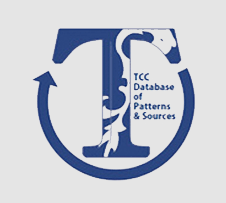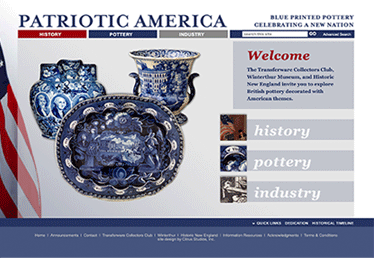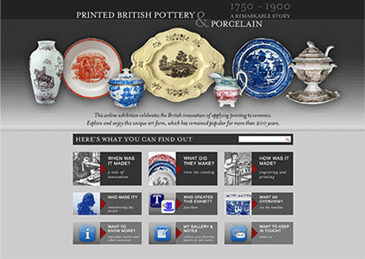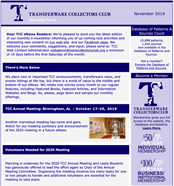


18,920 patterns and 1,144 sources and still growing.
Each month we feature a new pattern from our Pattern and Source Print Database and archive them on these pages.
Members only: for more information about these patterns and to see other similar patterns, search the Pattern and Source Print Database.
(Click on thumbnails to see larger images)
Plate, 7 inches. Made by Enoch Wood & Sons (1818-1836), this pattern is part of a series of European scenes that is known as "No. 106" Series. This pattern pictures St. Pietro de Castello in Venice, after a drawing by Clarkson Stanfield that was engraved and published in "Heath's Picturesque Annual for 1832". Yellow is one of the less common colors found on transferware.
Shown is a 10.5 inch plate from the "Napoleon's Battles" series. It was made by Charles James Mason & Co. (1826-1845). It depicts "The Battle of "Austerlitz (the title of the battle is at the bottom of the central scene). The Battle of Austerlitz, also known as the Battle of the Three Emperors, is considered perhaps the greatest of Napoleon's victories.
Shown is a 5.25 inch saucer. It was made by R. Davies & Co. (1833-1844). The pattern illustrates the city of Christiania, which is now known as Oslo. Oslo was founded in the 11th century, but became known as Christiania to honor the Danish and Norwegian King Christian in the 17th century. The name reverted to Oslo in 1926. Oslo is the capital of Norway.
Shown is an 18.25 inch platter titled “Tomb of the Emperor Shah Jehan.” It was made by John Hall (& Sons) around 1825. The pattern is based on a print, “The Taj Mahal, Tomb of the Emperor Shah Jehan and his Queen” from the book “A Picturesque Tour along the Rivers Ganges and Jumna in India” by Charles Ramus Forrest, which was published in 1824.
Shown is a 6.625 inch plate in John Hall (& Sons), 1814-1832, “Oriental Scenery” series. The pattern is from a series of Indian views, and this one is titled “City Of Benares.” It is copied from Charles Ramus Forrest’s book “A Picturesque Tour along the Rivers Ganges and Jumna in India,” which was published in 1824.
Rich with content for ceramic collectors, researchers, authors, curators, and historic archaeologists, the sites are sure to deliver value for their visitors. The exhibition’s curators continue to enhance them and, now, with site application upgrades, including a new magnification feature and upgraded content management capabilities, the TCC and its collaborators are pleased to relaunch these exhibits, all free to a worldwide audience.

Branded Patriotic America, debuted in 2014 in collaboration with Historic New England, and the Winterthur Museum

Launched in 2015 in partnership with the Northern Ceramic Society.
 Not a member but want to receive email updates?
Not a member but want to receive email updates?